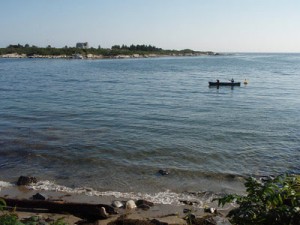Gulf of Maine
RUI: Changes in Baseline Conditions in Gulf of Maine Coastal Ecosystems over the Last 4,000 Years (PI B. Johnson, co-PIs W. Ambrose and B. Bourque)
According to a recent study done by Halpern et al. (2008), all coastal areas have been altered, in some manner, by recent human activity. The Gulf of Maine (GoM) is no exception to this fact.
Our current understanding of the function and resilience of nearshore ecosystems in the GoM is based largely on studies that have focused on the last 70+ years, a period of time that is relatively short in the GoM’s 8,000+ year history, and a period of time which has undergone rapid environmental change due to human activity (Halpern et al., 2008). Long term records of ecological change are needed to determine baseline conditions thereby allowing us to evaluate the significance of current environmental changes, and predict possible responses to future change.
The focus of this research project is to evaluate the degree to which nearshore ecosystems dynamics have shifted over the last 4,000 years. We are using the stable carbon (C), nitrogen (N) and sulfur (S) isotopes preserved in tissues of modern and ancient marine organisms to assess long-term trends in nearshore primary production, trophic connectivity, and foodweb dynamics.
